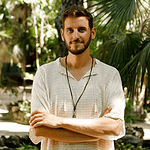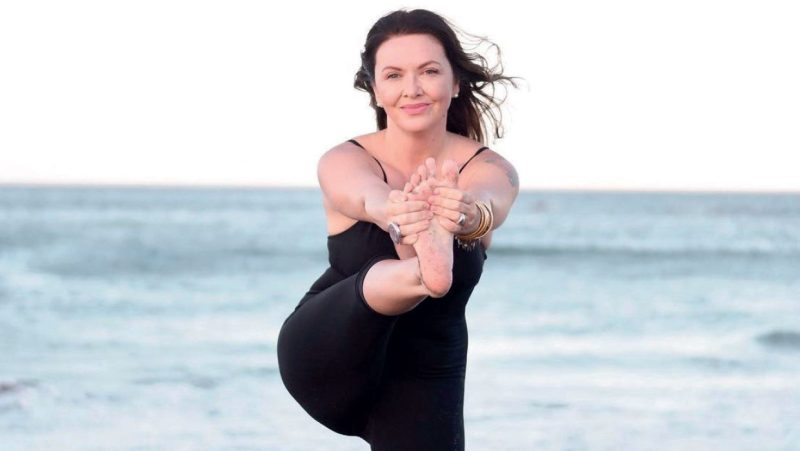
4 bodywork techniques to reunite body and mind
Emotions that are not processed may become stored in your unconscious and may influence your body posture and overall health and wellbeing. Try these 4 bodywork techniques, by Alexis Alcala
Our body remembers what the mind forgets. Sometimes aches and pains can arise without any rhyme or reason and leave us confused and hurting. They can be caused by unhealed traumas, blockages or stored negative emotions and can often become chronic if left untreated. An unsung hero for physical and emotional healing is bodywork!
Bodywork takes the form of any therapeutic or personal development technique that involves working with the human body and can utilise breathwork, dynamic meditation, sound healing, and energy work that all together can have powerful effects.
For a long time there has been evidence connecting physical matter and energy, linking bodily structures and mental processes. Put simply, the way you feel affects the way you think and vice versa. For instance, when we experience stress, we tend to hold tension in the neck and shoulders. Emotions that were not processed may become stored in your unconscious and may influence your body posture and overall health and wellbeing. This has a lot to do with muscle tension that emerges to create postures that keep us safe or unaware of unpleasant feelings.
The mind-body connection is an intimately intertwined relationship between our thoughts and feelings. We store memories, experiences, and emotions on a cellular level, therefore some people encounter body anxiety even when there are no anxious thoughts to follow. If we draw a line between animals and humans, our symptoms of stress and trauma linger long after the incident has passed. Animals can easily recover once the threat is gone because of their innate ability to release survival energy built up with movements like shaking and stretching, whilst humans can not.
By incorporating some somatic therapies' principles in your daily life, you can bring your body back into a more harmonious alignment. To foray into bodywork, you can start at home and here we will explain four bodywork techniques* you can use on yourself or a partner to release muscle tension and let go of negative physical sensations. Please note that bodywork is a very intuitive tool. While the intention behind your touch is very important, the techniques and points of touch depend on your intuition. For some blockages, deep tissue massage or applying pressure on the area helps release the blockages, while for others, gentle tapping will do the trick. Our advice is to focus on the messages your body communicates so that you can locate where to work and touch the areas in a conscious way.
1. Ribs exercise
This exercise will help you get familiar with the structures around your heart area.
Feel the ribs, 10-minute exercise.
Placing your hands on the base of your rib cage while lying in a position of productive rest. As you breathe, feel them move. Find the ends of the two floating ribs that are on each side of you.
- Continue tracing the space between each of your subsequent ten pairs of ribs with the flat of your thumbs. The massage should begin at the side of the body and move forward to the breastbone (the long and flat bone in the middle of your chest), where they are attached.
- As the ribs incline toward the spine, move your finger back to the side and feel the diagonal on the back surface. Encourage even and equal spacing between the bones if you experience any soreness in the areas between your ribs.
- Turn over to your stomach. While in this position, feel the ribs move. Roll your fingers over the bones and structures around your heart and lungs, discovering the area.
- Make sure you are seated. Breathe.
- Turn your body while standing and feel your vertebrae. Detecting the ribs, feel your internal organs.
2. Shoulders exercise
Shoulders are a frequently neglected area that can hold a lot of tension and pain, thus this simple mindfulness exercise helps locate areas of tension and to release them.
Shoulder turning exercise for 20 minutes:
Lying on one side with the knees slightly bent for support and one arm relaxed or supported under the body:
- Draw the other arm up and perpendicular to the torso, starting with the fingers. Close your eyes to heighten your awareness and feel your humerus (upper arm bone) sink into your shoulder blade to provide your arm with a base of support.
- Start making little circles with your fingers on the ceiling.
- Allow the rings to gradually grow while moving very slowly. Imagine moving with little to no force. This will encourage the use of the deeper layers of the muscles.
- Gently change directions once the circles are a comfortable size.
- Use your fingertip to gradually create smaller and smaller circles on the ceiling.
- Draw the tiniest circle you can on the ceiling.
- Once you are done, relax your fingers toward gravity, your wrist, your elbow, your shoulder, and finally, rest your palm on the floor in front of your ribs.
- To lift yourself to a seated position, press your palm and fingertips into the ground while connecting them to your shoulder.
- Step up and feel your arms.
- After you are finished doing the exercise with one arm, do the other side.
3. Sensitive Touch Exercise
Our touch can communicate emotions. With this technique, your touch will become more conscious, intentional and gentle.
Start by warming your hands by rubbing them together. Then, progressively join your fingertips through the bones until your palms are touching.
Feel the mild pressure through the bones of your hands into the bones of your chest and the soft tissues/organs of the lungs and heart.
Notice how this movement from the palms to the center of the body increases blood flow and warms the area around your palms in the body.
Next, separate the hands slowly and gradually, by keeping an eye on the heat and energy in the area between them.
Maintain the sensitivity by moving them as far apart as possible.
Continue by concentrating on your hands in general, the space between your hands, and the connection you created between the heart and the hand.
Experiment with different levels of sensation: energy and heat without physical contact, by barely touching, and deep pressure. Follow by placing your hand on your thigh while seated. Feel the fabric on your palm. Bring your attention to the skin's surface and the warmth beneath the garment.
Concentrate on the denser tissue muscle and fascia layers. Visualize your touch going through your skin and gently caressing all the deep layers. Try to feel the sensations your touch stimulates in the inner tissues.
Focus your attention from the skin to your bones and apply deep pressure to feel through the layers. Finally, return to light touch and feel for different tissue densities. At this point, you may be able to detect light reactions from your body such as a change in your blood pulse or muscular contraction. Allow yourself to be aware of whatever is happening in the current moment through your senses. The process of touch will eventually allow you to differentiate between various tissues of your body.
4. Fascia Exercise
This full-body stretching exercise can improve the elasticity of fascia and increase your capacity to move and reduce chronic pain.
Reach both arms out to the side while sitting or standing, imagine they are pointing at the numbers "3" and "9" of a fictitious clock. When standing, spread your feet shoulder-width apart or beyond, and keep your knees slightly bent.
Start by simultaneously reaching apart with the outstretched arms. Throughout a large portion of the workout, the arms will remain in this antagonistic position no matter what time of the clock they are aiming at.
Your body will "want" to move in the way it naturally moves when you experience the polarity, which causes a stretch in the fascia and myofascial. You can find yourself twisted or with one hand on the ground and the other straight up in the air. Breathe continuously in a smooth, calm manner, without halting between breaths. To support and expand your motions, breathe deeply and with fluidly. Even more, picture your breath flowing into the parts that are the most stretched.
Maintain a bodywide stretch while continuing to allow for natural movement. Maintain a calm, deliberate movement that moves the stretch smoothly from one part of your body to the next.
You can find yourself on the floor moving in a snake-like manner as the workout proceeds. Do not worry if your arms move out of their opposite positions if this happens. Continue for a few minutes—at least fifteen to twenty (you can start the first times with five minutes). Keep in mind that natural, organic, connected movement is vital. Consider pausing every ten to fifteen minutes to use the felt sense until you have become accustomed to the practice and extended it to at least twenty minutes. Pay attention to any fleeting physical feelings that arise.
There you go, four bodywork techniques to release tension, unblock traumas and feel calmer.
* Exercises are inspired by Andrea Olsen, Caryn McHose – “Bodystories A guide to experiential anatomy”





